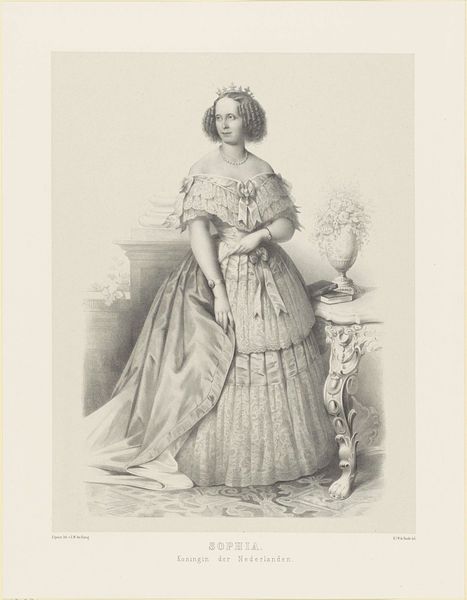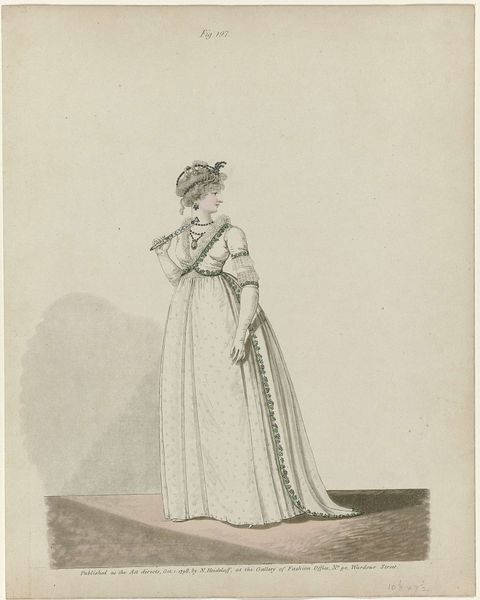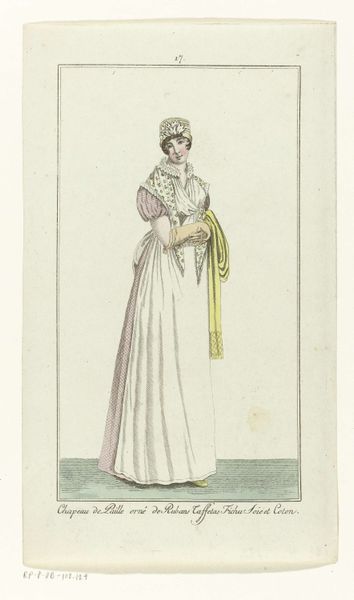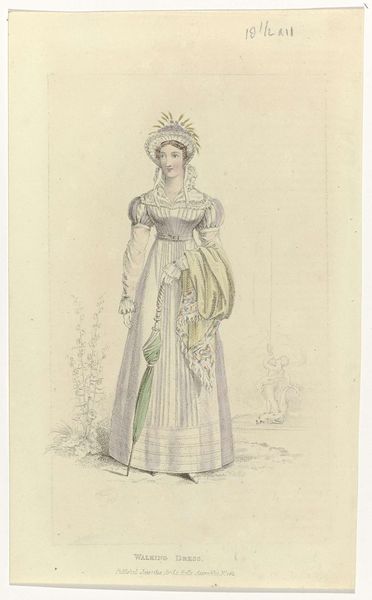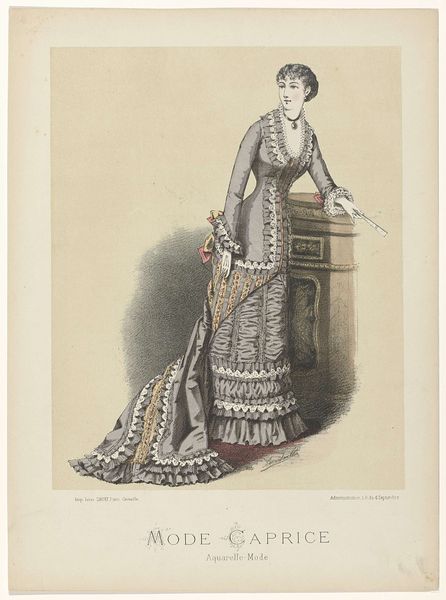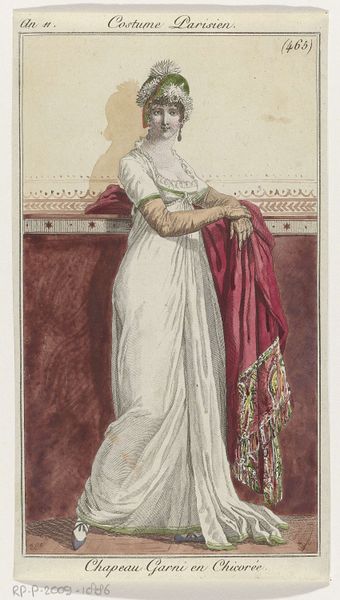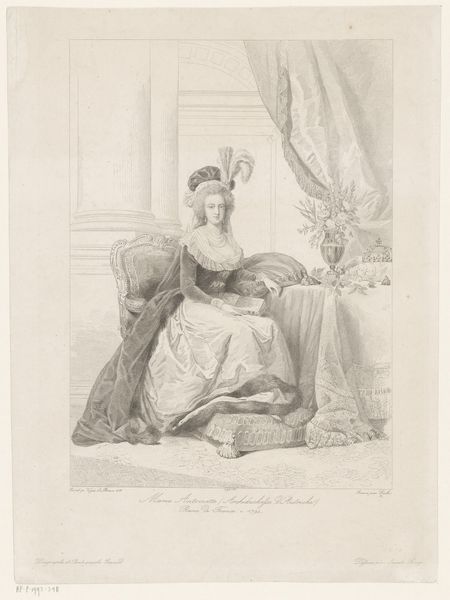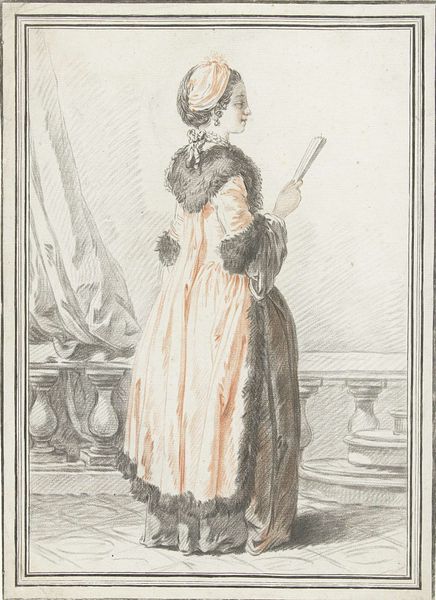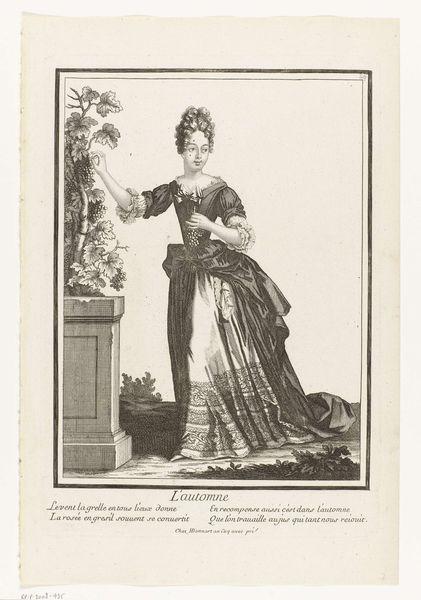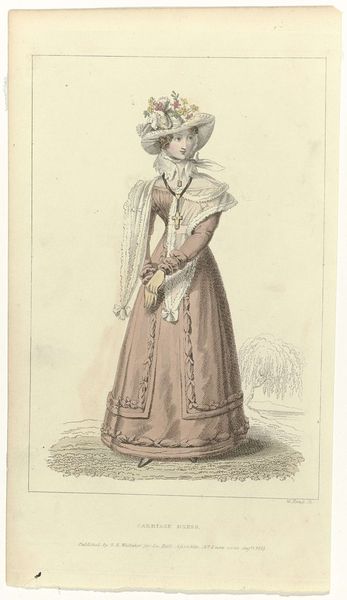
lithograph, print, engraving
#
portrait
#
neoclacissism
#
lithograph
# print
#
19th century
#
genre-painting
#
engraving
Dimensions: height 266 mm, width 189 mm
Copyright: Rijks Museum: Open Domain
Editor: We are looking at a lithograph and engraving titled "Portret van Anna Paulowna Romanowa" by Claudio Linati, made sometime between 1816 and 1829. It strikes me as quite restrained; the composition is so formal, and even with the flowing gown, it feels very composed. What stands out to you from a formalist point of view? Curator: Formally, the success of this portrait lies in its precise linear articulation, particularly evident in the delicate rendering of Anna Paulowna's features and dress. The Neoclassical aesthetic demands a certain austerity. Notice the subtle tonal gradations achieved through the lithographic process, lending depth without sacrificing linearity. How does this use of line affect the overall reading of the image? Editor: I see. The crispness of the line, especially outlining her dress, makes the material feel more… structured than flowing, I guess? Less about texture and more about form. Curator: Precisely. The engraving contributes to this effect by providing sharper, more defined details. The balanced composition, with Anna Paulowna positioned centrally and the architectural elements flanking her, reinforces this sense of order and control. Consider how these elements work together to construct a specific image of power and status. The very control over medium reinforces a sense of command over the self, wouldn’t you agree? Editor: Yes, definitely. I hadn't thought about the status aspect so directly. The restraint almost becomes a symbol in itself, carefully created. Curator: Indeed. By attending to the intrinsic elements – line, composition, and technique – we can unlock a richer understanding of the artist's intention and the portrait’s cultural significance. The print transcends simple representation, it becomes a statement of form. Editor: That is really interesting to consider. I’ll pay closer attention to how the different printing techniques affect the form next time.
Comments
No comments
Be the first to comment and join the conversation on the ultimate creative platform.
